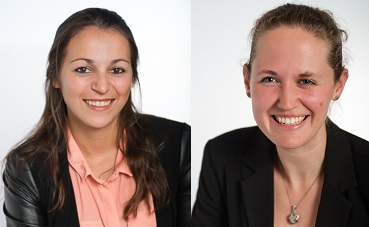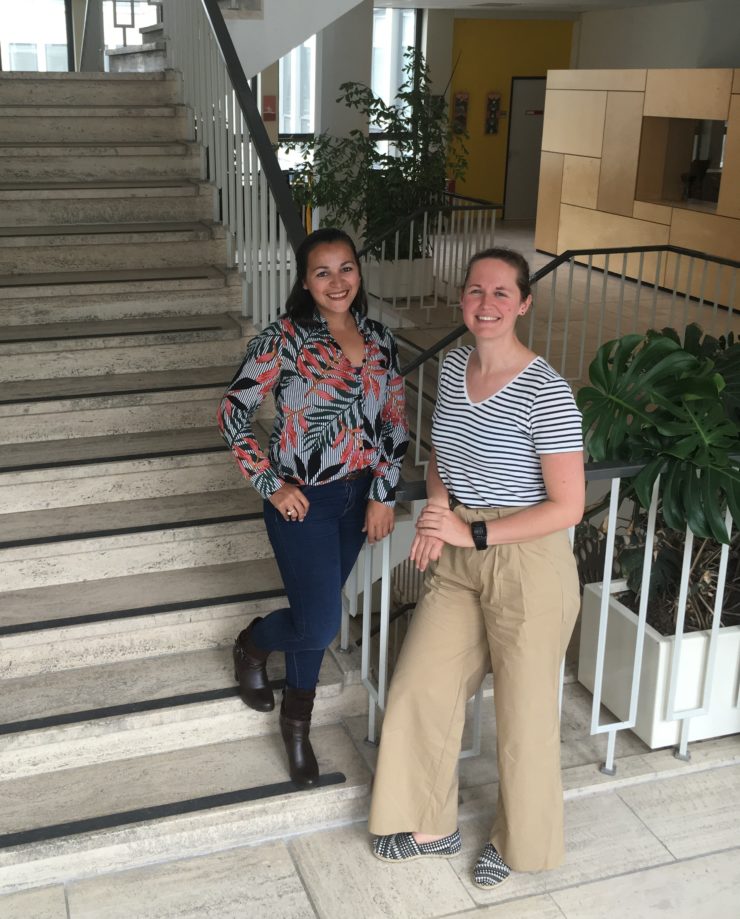News
How a side project turned into two junior researchers first independent paper

Michelle Achterberg and Mara van der Meulen
Exciting times for Michelle Achterberg and Mara van der Meulen. They are the sole authors on a recent publication about brain scan quality published in Developmental Cognitive Neuroscience (DCN). A great first step towards scientific independence that they took together. So how did they do it?
In 2014, Michelle and Mara started their PhD research on the Leiden Consortium on Individual Development (L-CID) intervention cohort. Their PhDs rely heavily on L-CID brain imaging measures. They also experienced first-hand that scanning young children is challenging. Despite making every effort, data is often of insufficient quality. So when Michelle was asked to evaluate L-CID scan quality after the first year of data collection, she said yes.
From side project to independent paper
Initially assessing L-CID scan quality was a side project, until Michelle realised there was a story here. “By scanning over 500 seven-to-nine-year-old children, we could provide actual attrition rate numbers. More importantly, since L-CID uses a developmental twin sample, we could examine what environmental as well as genetic factors contribute to scan quality. Information that, in our opinion, contributes to the field of developmental neuroimaging.“
Once it became clear this would be a paper, Michelle and Mara were excited to work on it together. “This question came up as important and relatively unexplored in the field. Taking it on was a nice way to get some independence and a fun experience.“
Their paper highlights the importance of motion correction and quality control to reduce confounding by genetic factors. Interestingly in motion corrected and quality-controlled data, the shared environment still influenced subtle head motion. This suggest it pays off to improve the shared environment by preparing children for the scanner and using scanner protocols geared towards children.
Team work
This joint first independent publication is part of a long time scientific partnership. Mara and Michelle started around the same time on the same cohort (L-CID) as part of the Effects of interventions work package. L-CID is led by Eveline Crone (Leiden), in collaboration with Marian Bakermans (VU) and Marinus van IJzendoorn (emeritus, scientific consultant). The project recently made a transition to a team science approach with opportunities for young researchers to grow within the project towards personal career paths.
When asked about this publication, Eveline says “This is a great example of two brilliant young researchers who come up with an idea and just do it. The only thing you have to do as an advisor in these cases, is provide support and make sure they get the resources to do it. This is a nice example of our team scientist approach, where we work together, inspire each other but also respect personal paths and autonomy.“
Science sisters

Michelle and Mara continue to work together as part of the L-CID team
Mara and Michelle profited from coming up together in the same lab or as they put it: “Not only did we share the ups and downs of PhD life, but we benefited from working as a team. By applying our own individual research qualities, we achieved far more together than we could have on our own.“
These science sisters continue to be part of the L-CID team and are planning to stay as postdoctoral researchers. In the upcoming years Michelle will focus on the longitudinal development of social emotion regulation, while Mara’s focus will be on developmental trajectories of prosocial behaviour.
Reference: Achterberg M., van der Meulen M. (2019) Genetic and environmental influences on MRI scan quantity and quality. Developmental Cognitive Neuroscience. https://doi.org/10.1016/j.dcn.2019.100667
